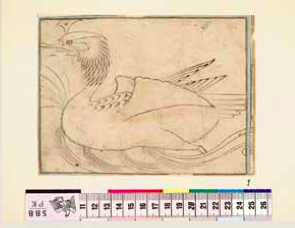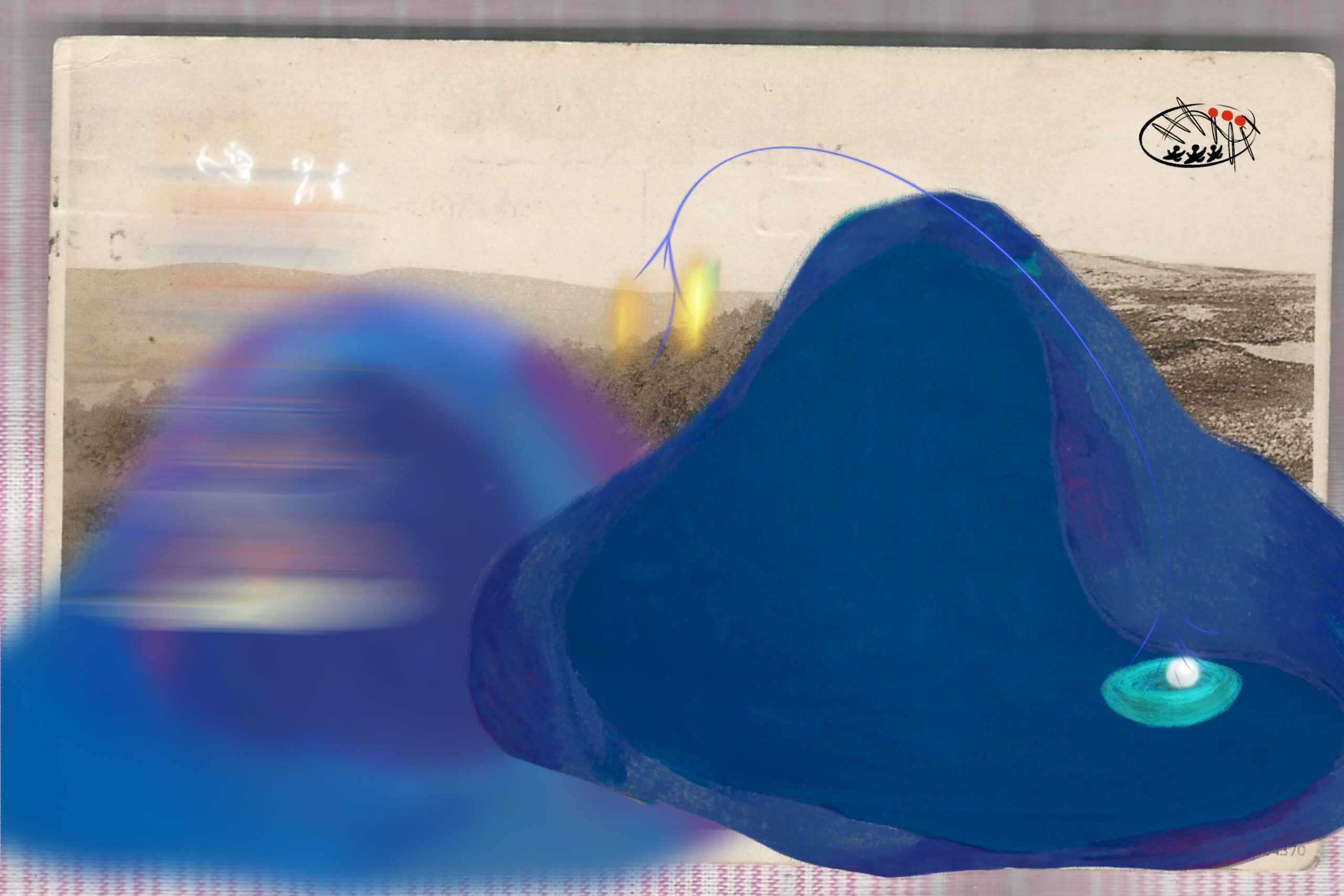FICTIONAL EXHIBITIONS: DIASPORIC INK
| 2014年11月09日 | 发表于 LEAP 29

I first met Kai Kawus on the internet. That was his username, but I’ve continued calling him Kai even after meeting face-to-face, which makes me realize that I have never asked for this old friend’s real name. This could be because my English still isn’t up to scratch. Truthfully, much of the time silence relieves us of difficult attempts at conversation. He tells me that he understands my silence and apparent blankness to be part of an introverted Asian character. This quiet atmosphere seems both vague and confusing, finding ways to present itself when two people meet, enveloping us.
* * * * *
He presented me with a fifth item at the collection room: a hardback book of Islamic origin.
It was so old that only a few faint traces of Arabic lettering could be made out on its cover. Upon opening the book, I was presented with a completely different world, or rather, two past worlds—concealed within a book, almost forgotten, they had exchanged their finest goods in silence.The layout of the book belonged to an Islamic style, though spaces that should have been filled with meticulous drawings had been replaced by simple sketches that reminded me of a plain Chinese style with mountains and mist colored and textured in heavy tones, echoing the formal compositions one would expect from Tang dynasty blue-green landscape. On one page ducks drift on rippling water; on the next, nimble brushstrokes define the clear and concise lines of architectural drawings, neatly bringing forth the trapezoidal forms of Persianate architecture that stretch with restraint into the sky, only tying themselves up with small domes. The elegant yellowing of the paper brings to mind the effect of accidentally picking up two film negatives at once, perceiving one through the other.

We exchanged a look, and he explained that the book was from a kitabkhana, a Persian scriptorium of the fourteenth century. Unlike the state-funded imperial painting academy of the Chinese context, kitabkhana were established by aristocrats whose patronage enabled not only the Semu painters from Khanbaliq (now known as Beijing), but also poets from Khorasan and monks from the former state of Ilkhanate to come together. With the editing and publishing of the Persian national epic poem “Shahnama,” the Central Asian region of Transoxiana spearheaded this practice of artistic patronage; the cultural production specific to the scriptorium reached its peak during the height of the Timurid Empire. I listened, entranced, and started to imagine the details of the appearance of the kitabkhana, an institution that braided the various branches of learning together. I also begin to wonder what brand of cosmopolitanism—situated within the center of Eurasia, at this particular time of prosperity—this would have represented at the time.
This train of thought followed the diverging lines of the illustrations; after a while, I was reminded that I was not looking at something Chinese at all. Portrayed with a heavy use of color, these scenic paintings are characterized by a certain rigid repetitiveness; lapis lazuli and malachite pigments can’t compare to the beautifully complex azurite blue that classical China possessed in abundance. The styles of 60 or 70 illustrations flutter and fly as though seeking languages to encapsulate tongues that were ineffable to the people of that time; carefully coded into color and ink, they signify elusive ancient thoughts perhaps only apparent to readers of another culture.
I started to examine the portraits in the book. One image employs a screen painting and a flowing river to divide an illustration into three distinct times and spaces. The first depicts the process of painters at work. The next presents a group of people on horseback, determinedly encircling a Chinese woman under a sun canopy with her head tilted towards the river, which cuts the painting in two. Interpreting the scene through today’s vision, we would say that the woman’s gaze is directed not only at another physical space, but also into another picture plane lying beyond the river: the painter’s studio, depicted as in a light hearted play. Following the sound of my finger running over the surface of the rough paper and along the spiral shell lines of f lowing water, an idea for a folded narrative within the picture suddenly came to me—that this portrait may have recounted a very specific story about painting and truth.
Ge Hong, a Daoist sage of the Jin period, wrote the following story in A Miscellany of the Western Capital: During the reign of the Han dynasty emperor Yuan, the painter Mao Yanshou took bribes to paint portraits of palace maids for the emperor’s perusal. When Wang Zhaojun came to the palace, she def ied this practice and refused to acknowledge the painter; her beauty was never seen by the emperor. Following her dismissal to the western region, the emperor, discovering Mao’s immoral practice, had him executed. Painters were banished from the royal courts.
I told Kai this story, which also features in the Yuan dynasty play Autumn in the Han Palace. Today, Wang Zhaojun’s dismissal and the artist’s unfaithful portrayal of reality allow the painter to confront the split identity of his or her culture and profession. Perhaps this book—half travel diary, half historical document—actually embodies this legend. Kai imagined that perhaps these painters, so adept at ink and brush, still spoke Chinese together, or perhaps they lost the knowledge of how to write the script of the central plains. Our conversation ended as Kai shared an anecdote on early Chinese painting theory. Like the ending of a science fiction novel, the story seemed transcendental, as if searching for a common source of the scattered worlds of ink painting; I asked Kai to briefly note it down.
I have since shown the story to various friends, but none of them seem to know its source. Online searches produce only frustratingly irrelevant results: a book about dreams and Daoist eight-sided diagrams. But my search also produced a single poignant line, pasted below:
“I have seen numerous paintings; they depict things from the beginning of the universe and foretell events to come.”


